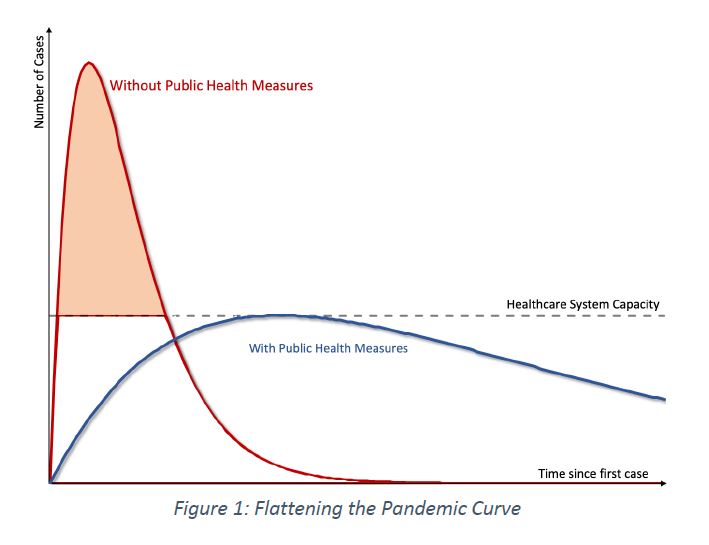Sunday, March 15, 2020
Flattening the Pandemic and Recession Curves
From an article by Pierre-Olivier Gourinchas (UC Berkeley):
“We are facing a joint health and economic crisis of unprecedented proportions in recent
history.I want to start by acknowledging that containment of the pandemic is the utmost priority.
Figure 1 summarizes how public health experts approach the problem.In the short run, the capacity of any country’s health system is finite (capacity of Intensive Care Units, number of hospital beds, number of skilled health professionals, ventilators….). This puts an upper bound on the number of patients that can be properly treated, at any given point in time and is represented by the flat line in the Figure.
Unchecked, and given what we know of the transmission rate of the coronavirus, the pandemic would quickly overwhelm any health system, leaving many infected patients with deteriorating pulmonary conditions without any treatment. The fatality rate would surge. The threat is almost beyond comprehension. With a 2% case fatality rate baseline for overwhelmed health systems, and 50% of the world population infected, 1% of the world population -76 million people- would die. This scenario corresponds to the red curve in Figure 1. The part of the curve above the capacity of the health care system faces a sharply higher mortality risk (shaded red area).
Instead, public health policy, at least in all semi-decently run countries, aims to “flatten the
curve” by imposing drastic social distancing measures and promoting health practices to reduce the transmission rate. This ‘flattening of the curve’ would spread the pandemic over time, enabling more people to receive proper health treatment – ultimately lowering the fatality rate. This is the blue curve in Figure 1.”Continue reading here.
Posted by at 6:59 PM
Labels: Inclusive Growth
Subscribe to: Posts
